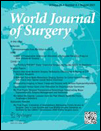Evaluation of Interventions Addressing Timely Access to Surgical Care in Low-Income and Low-Middle-Income Countries as Outlined by the LANCET Commission 2030 Global Surgery Goals: A Systematic Review
Supplementary Information: The online version contains supplementary material available at https://doi.org/10.1007/s00268-021-06152-x.
Abstract
Background
In 2015, the Lancet Commission on Global Surgery published six global surgery goals, one of which was to provide 80% of the world's population with timely access to the Bellwether Surgical procedures. Little is known about the prevalence or efficacy of subsequent interventions implemented in under-resourced countries to increase timely access to Bellwether surgical procedures.
Methods
A systematic review of articles and grey literature published in MEDLINE, Embase, Cochrane, CINAHL, and Web of Science databases was conducted. Two independent reviewers evaluated 1923 captured abstracts using explicit inclusion and exclusion criteria. Following a thematic analysis, two reviewers conducted data extraction on the eleven manuscripts included in the final review.
Results
The studied innovations, sparse in number, centred on improved educational resources, the development of orthopaedic devices, and models for assessing surgical access disparity. Eight papers were centred around timely access to caesarean sections, three around open fracture reduction, and three around laparotomy; all focused on adult populations. Five papers addressed innovations in West Africa, two in East Africa, two in South Asia, and one in Southeast Asia. Common outcome metrics were not used to assess improvements to timely surgical access.
Conclusions
Few published interventions have been implemented since the publication of the 2015 Lancet Commission on Global Surgery goals that have or will longitudinally increase the availability of timely surgical access in Low and Middle-Income Countries (LMIC). Tangible outcome measures in existing literature are lacking. An up-scaling and wider adoption of successful strategies is necessary and possible.




